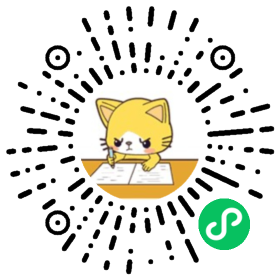【多选题】
下列关于路基工程说法正确的有___
A. 地铁路基工程应具有足够的强度、稳定性和耐久性。
B. 路基工程的地基应满足承载力和路基工后沉降的要求。
C. 路基工程防排水设计应保证排水系统完整、通畅。
D. 路肩及边坡上不应设置电缆沟槽,困难情况下必须设置时,应进行结构设计,并应采取保证路基完整和稳定的措施。
E. 在路基上设置其他杆架、管线等设备时,也应采取保证路基稳定的措施。
查看试卷,进入试卷练习

微信扫一扫,开始刷题

答案
ABCDE
解析
暂无解析
相关试题
【多选题】
下列关于扣件数量说法正确的有___
A. 在正线、试车线、出入线,直线及R>400m、坡度i<20‰上无砟道床的扣件铺设数量为1600~1680对/km。
B. 在正线、试车线、出入线,R≤400m或坡度i≥20‰上无砟道床的扣件铺设数量为1680对/km。
C. 在其他配线的无砟道床上扣件铺设数量为1600对/km。
D. 在车场线(不含试车线)的无砟道床上扣件铺设数量为1440对/km。
E. 在车场线(不含试车线)的无砟道床上扣件铺设数量为1667对/km。
【多选题】
下列关于扣件数量说法正确的有___
A. 在正线、试车线、出入线,直线及R>400m、坡度i<20‰上混凝土枕有砟道床的扣件铺设数量为1600~1680对/km。
B. 在正线、试车线、出入线,R≤400m或坡度i≥20‰上混凝土枕有砟道床的扣件铺设数量为1680~1760对/km。
C. 在其他配线的混凝土枕有砟道床上扣件铺设数量为1600~1680对/km。
D. 在车场线(不含试车线)的混凝土枕有砟道床上扣件铺设数量为1440对/km。
E. 在车场线(不含试车线)的木枕有砟道床上扣件铺设数量为1440对/km。
【多选题】
下列关于扣件数量说法正确的有___
A. 在正线、试车线、出入线,直线及R>400m、坡度i<20‰的无缝线路混凝土枕有砟道床的扣件铺设数量为1680~1760对/km。
B. 在正线、试车线、出入线,R≤400m或坡度i≥20‰的无缝线路混凝土枕有砟道床的扣件铺设数量为1760~1840对/km。
C. 在正线、试车线、出入线,直线及R>400m、坡度i<20‰的木枕有砟道床的扣件铺设数量为1680~1760对/km。
D. 在正线、试车线、出入线,R≤400m或坡度i≥20‰的木枕有砟道床的扣件铺设数量为1760~1840对/km。
E. 在其他配线的木枕有砟道床上扣件铺设数量为1680对/km。
【多选题】
下列关于道床说法正确的有___
A. 正线整体道床地段为1680根/km。
B. 道床顶面高程以轨枕承轨面高出道床顶面30~40mm。
C. 整体道床根据轨枕间距分段布置,一般地段每12m左右设一道宽20mm的伸缩缝。
D. 整体道床U型槽及洞口48m范围内、联络通道前后各24m范围内每6m左右设一道伸缩缝。
E. 整体道床隧道结构变形缝处道床也应设置伸缩缝,伸缩缝应位于两根枕中间。
【多选题】
下列关于车挡检查说法正确的有___
A. 对于(固定式液压挡车器)、(滑移式挡车器),正线及辅助线每季度不少于一次状态检查。
B. 站场内每季度不少于一次状态检查。(库内月牙型挡车器)每半年不少于一次状态检查。
C. 对设置在折返岔区线路终端的各类型挡车器,每月进行不少于一次巡检。
D. 对于(固定式液压挡车器)、(滑移式挡车器),正线及辅助线每年不少于二次状态检查。
E. 站场内每季度不少于一次状态检查。(库内月牙型挡车器)每年不少于一次状态检查。
【多选题】
下列说法正确的有___
A. 起道前应先拨正线路方向。
B. 起、拨道机不得安放在铝热焊焊缝处。
C. 扒开的碎石道床应及时回填、夯实。
D. 曲线地段拨道只能上挑,不宜下压。
E. 直线地段起道,左右股应分别进行。
【多选题】
下列说法正确的有___
A. 木枕宽面在下,顶面与底面同宽时,应使树心一面向下。
B. 接头处使用质量较好的木枕。
C. 劈裂的木枕,铺设前应捆扎或钉组钉板。
D. 木枕宽面在下,顶面与底面同宽时,应使树心一面向上。
E. 接头处可使用质量较差的木枕。
【多选题】
下列说法正确的有___
A. 未被平衡欠超高,一般应不大于61mm。
B. 未被平衡过超高不得大于30mm。
C. 实设最大超高,在正线及试车线上不得大于120mm。
D. 曲线超高应在整个缓和曲线内顺完,顺坡坡度一般应不大于1/(9Vmax)顺坡。
E. 曲线超高应在整个缓和曲线内顺完,顺坡坡度一般应不大于1/(7Vmax)顺坡。
【多选题】
下列说法正确的有___
A. 在直线上顺坡的超高,有缓和曲线时不得大于15mm。
B. 在直线上顺坡的超高,无缓和曲线时不得大于25mm。
C. 在困难条件下,可适当加大顺坡破度,但不得大于1/(7 Vmax),当1/(7 Vmax)大于2‰时,应按2‰设置。
D. 伸缩区长度据年轨温差幅值、道床纵向阻力、钢轨接头阻力等参数计算确定,一般为50~100m。
E. 伸缩区长度据年轨温差幅值、道床纵向阻力、钢轨接头阻力等参数计算确定,一般为100~150m。
【多选题】
下列说法正确的有___
A. 钢轨因金属疲劳、强度减弱而伤损严重时,应由工务中心决定适当减低轨道线路容许通过速度,以保证行车安全。
B. 扣件应经常保持零件齐全,位置正确,作用良好,缺少时应及时补充。
C. 扣板、轨距挡板应靠近贴轨底边。
D. 铁垫板折断、变形、严重锈蚀或丧失固定立柱螺栓功能应有计划地更换。
E. 道岔各种零件应齐全,作用良好,缺少时应及时补充。
【多选题】
下列关于钢弹簧浮置板(减振垫浮置板)说法正确的有___
A. 巡检时应包括检查浮置板有无裂纹。
B. 巡检时应包括检查板缝间是否有渗水。
C. 维修时应包括查看板缝间有无垃圾并清除。
D. 维修时应包括查看检查孔盖板并固定处理。
E. 维修时应包括清理浮置板道床水沟。
【多选题】
下列关于钢弹簧浮置板(减振垫浮置板)说法正确的有___
A. 维修时应包括整修浮置板道床。
B. 维修时应包括对裂纹进行监测并处理。
C. 维修时应包括更换损坏的部件。
D. 大修时应包括全面顶升、更换浮置板道床。
E. 大修时应包括全面置换道砟。
【多选题】
下列关于道口及标志说法正确的有___
A. 巡检时应包括道口板及设备是否侵入限界。
B. 巡检时应包括道口轮缘槽的清理。
C. 巡检时应包括检查线路、道口标志标记是否齐全、牢固。
D. 维修时应包括线路标志标记的刷新。
E. 巡检时应包括轨距的整改。
【多选题】
下列关于道口及标志说法正确的有___
A. 道口及标志维修时应包括道口板的更换。
B. 道口及标志维修时应包括平交道口下沉的整治。
C. 道口及标志维修时应包括道口更换轨枕、清筛道床。
D. 道口及标志维修时应包括道岔的更换
E. 道口及标志维修时应包括围栏的更换
【多选题】
下列关于涂油器说法正确的有___
A. 涂油器巡检时应包括检查支架、箱体、涂油板、油管固定是否牢靠。
B. 涂油器巡检时应包括检查油管有无损坏漏油、老化现象。
C. 涂油器巡检时应包括检查出油量是否符合出油标准,出油量是否稳定。
D. 涂油器维修时应包括清污、调整出油量,加油。
E. 涂油器维修时应包括更换油管、支架、箱体以及联结部件。
【多选题】
下列说法正确的有___
A. 接触网地段需要拨道时,线路中心位置不得超过±30mm。
B. 接触网地段需要拨道时,一年单侧累计拨道量不得超过120mm。
C. 养护维修作业中,发现轨向、高低不良,起道、拨道省力,必须停止作业,及时采取防止胀轨跑道措施。
D. 无论作业中或作业后,发现线路轨向不良,用长10m弦测量两股钢轨的轨向偏差,当平均值达到10mm时,必须设置慢行信号。
E. 当两股钢轨的轨向偏差平均值达到12mm时,在轨温不变情况下,过车后线路弯曲变形突然扩大,必须立即设置停车信号。
【多选题】
下列说法正确的有___
A. 碎石道床脏污或翻浆,应结合综合维修或经常保养进行道床一般清筛或边坡清筛。
B. 边坡清筛为轨枕头外全部道砟,道床一般清筛后应及时夯实。
C. 边坡清筛宜使用边坡清筛机。
D. 拆检整体道床道岔尖轨跟端接头,检查双接头螺栓和腰鼓螺栓并调整尖轨跟部结构处于良好状态。
E. 边坡清筛宜使用簸箕。
【多选题】
下列说法正确的有___
A. 系统设计远期最大能力应满足行车密度不小于每小时30对列车的要求。
B. 两条线路之间的联络线应结合车站配线或渡线,与线路的上、下行正线连通。
C. 最小竖曲线半径为不宜小于2000m。
D. 正线的最大坡度不宜大于30‰,困难地段可采用35‰。
E. 出入线、联络线和特殊地形地区段的最大坡度不宜大于40‰。
【多选题】
下列说法正确的有___
A. 疏散平台高度(距轨顶面)应小于等于900mm。
B. 地铁地上线必要时应采取针对振动、噪声、景观、隐私、日照的治理措施。
C. 地铁地下线应减少振动对周围敏感点的影响。
D. 线路平面圆曲线半径应根据车辆类型、地形条件、运行速度、环境要求等综合因素比选确定。
E. 线路平面曲线半径选择宜适应所在区段的列车运行速度要求。
【多选题】
下列说法正确的有___
A. 折返线、停车线等宜设在直线上。
B. 折返线、停车线困难情况下,除道岔区外,可设在曲线上,并可不设缓和曲线,超高应为0mm~15mm。
C. 折返线、停车线在车挡前宜保持不少于20m的直线段。
D. 折返线、停车线等宜设在曲线上。
E. 折返线、停车线在车挡前宜保持不少于30m的直线段。
【多选题】
下列说法正确的有___
A. 圆曲线最小长度,在正线、联络线及车辆基地出入线上,A型车不宜小于25m。
B. 圆曲线最小长度,在正线、联络线及车辆基地出入线上,B型车不宜小于20m。
C. 圆曲线最小长度,在正线、联络线及车辆基地出入线上,A型车不宜小于30m。
D. 圆曲线最小长度,在正线、联络线及车辆基地出入线上,B型车不宜小于30m。
E. 圆曲线最小长度,在正线、联络线及车辆基地出入线上,A型车不宜小于35m。
【多选题】
下列说法正确的有___
A. 导曲线中部轨距加宽,直尖轨时,向两端递减至尖轨跟端为3m。
B. 导曲线中部轨距加宽,直尖轨时,向两端递减至辙叉前端为4m。
C. 导曲线中部轨距加宽,直尖轨时,向两端递减至尖轨跟端为4m。
D. 导曲线中部轨距加宽,直尖轨时,向两端递减至辙叉前端为5m。
E. 导曲线中部轨距加宽,直尖轨时,向两端递减至尖轨跟端为5m。
【多选题】
下列说法正确的有___
A. 两尖轨尖端距离小于6m,两尖端处轨距相等时不作递减,不相等时则从较大轨距向较小轨距均匀递减。
B. 两尖轨尖端距离大于6m时,则按不大于6‰的递减率递减,但中间应有不短于6m的相等轨距段。
C. 道岔前端与另一道岔后端相连时,尖轨尖端轨距递减率应不大于6‰。
D. 导曲线可根据需要设置6mm的超高,并在导曲线范围内按不大于2‰顺坡。
E. 导曲线可根据需要设置6mm的超高,并在导曲线范围内按不大于3‰顺坡。
【多选题】
下列说法正确的有___
A. 护轨平直部分轮缘槽标准宽度为42mm。
B. 护轨平直部分轮缘槽如侧向轨距为1441mm,则侧向轮缘槽标准宽度为48mm,容许误差为(+3,-1)mm。
C. 正线道岔(直向)与曲线之间的直线段长度,不得短于20m。
D. 站线道岔与曲线或道岔与其连接曲线之间的直线段长度,一般不得短于7.5m,困难条件下不得短于6m。
E. 轨距加宽递减率一般不得大于2‰,直线段较短时不得大于3‰。
【多选题】
下列说法正确的有___
A. 25m的60Kg/m钢轨接头螺栓等级为10.9。
B. 25m的50Kg/m钢轨接头螺栓等级为8.8。
C. 25m的60Kg/m钢轨接头螺栓扭矩为500N·m。
D. 25m的50Kg/m钢轨接头螺栓扭矩为400N·m。
E. 12.5m的50Kg/m钢轨接头螺栓等级为8.8。
推荐试题

